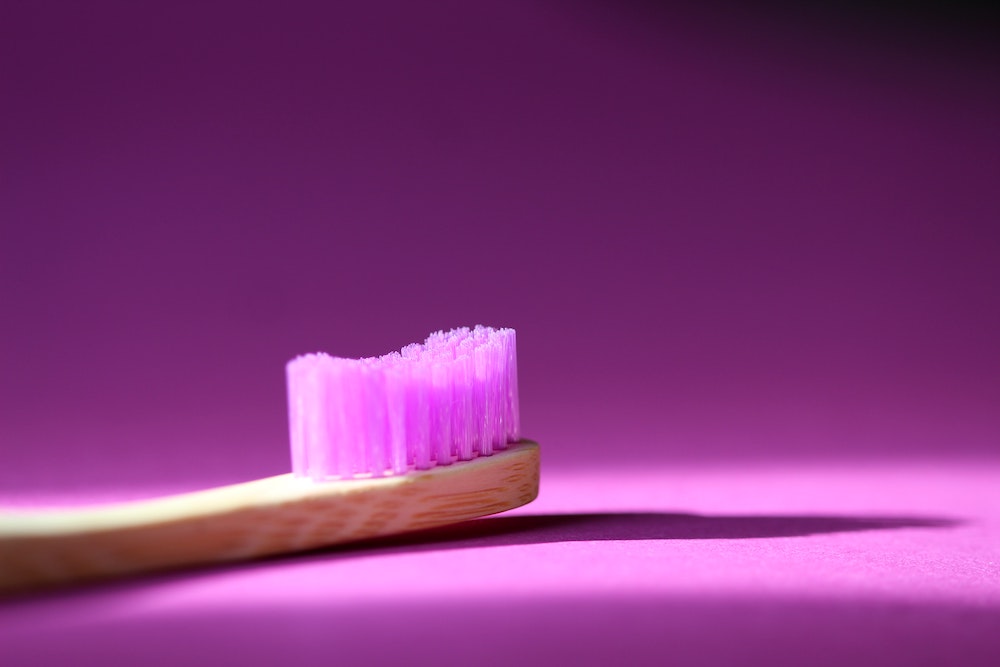How the environmental toxin fluorine was declared a cure for tooth decay
Every day, the non-degradable, highly toxic environmental toxin fluorine is recommended and used in far too high doses, e.g. for dental care and caries prophylaxis. Nowadays, we consume this non-degradable environmental toxin via tablets, fluoridated salt and high doses of fluoridated dental care products. Some countries even add it to drinking water by force. How did it come to this?
What is fluorine?
The volatile to gaseous substance belongs to the group of halogens. Halogens are very reactive and combine with metals to form salts. For this reason, they are called “salt formers”. Fluorine is the most reactive of all elements. In nature, it mostly occurs as a compound – as inorganic fluorides, the salts of hydrofluoric acid. Fluorine and fluorides are not the same thing, this is a common misunderstanding. Fluorides as a chemical compound are also toxic, yet less toxic than pure fluorine.
Possible symptoms of fluoride overdoses
- Bone density is increased, but natural elasticity is reduced. Result: stiffening of the bones
- Sodium fluoride is converted into hydrogen fluoride by stomach acid, which can lead to impairment/irritation of the mucous membranes of the stomach and intestines
- Consequences of too high fluoride concentrations are nausea, abdominal pain, diarrhoea and vomiting
- High doses of fluoride over a long period of time (e.g. fluoridated drinking water) can lead to kidney damage
- Babies and toddlers should not use fluoride toothpaste, as they like to swallow it
- Children like to take more toothpaste or “eat” half a tube because of the great taste, which can quickly lead to overdoses with subsequent gastrointestinal complaints
We do not want to fathom here which economic and media forces are necessary to transfigure an insecticide and hazardous waste (a waste product of the aluminium industry) into caries protection. A look at the history of aluminium production, its waste products, hazardous waste and legal actions will suffice.
How a toxin and insecticide became a major ingredient in cosmetics and drinking water
Sodium fluoride was classified as a toxicant in the USA until 1945 and was used as an insecticide to control/kill rats, lice and cockroaches. Today, we consume this non-degradable environmental toxin through tablets, fluoridated salt and high-dose fluoridated dental care products – in some countries it is even compulsorily added to drinking water.
The Director of the National Research Council (NRC), Dr. John Doull, has raised the following points in the light of a large-scale meta-study on fluoride:
“When we took a closer look at all the studies that had already been carried out, we quickly realised that many questions remained unanswered and that we have much less verified information than would be appropriate for the subject […].”
What is a safe daily dose of fluoride for children, adults or seniors? For women or men, and what is the data basis for the recommendations? What long-term damage can result from unnaturally increased fluoride intake?
Which forces and lobby organisations enabled fluorine to find its way into drinking water and cosmetics?
In the USA, the aluminium industry produced very large quantities of fluoride compounds at the beginning of the 1930s, which would have had to be disposed of as expensive hazardous waste.
At the time, the health authority was under the Treasury Department, whose minister was the influential billionaire Andrew William Mellon. Among his numerous corporate holdings was ALCOA (Aluminium Corporation of America), one of the leading companies in the aluminium industry.
The head of the health authority (and ALCOA shareholder) commissioned the dentist H. Trendley Dean to spread the benefits of fluoridated drinking water in terms of caries protection in order to be able to enrich large areas of drinking water with the fluorine compounds and thus dispose of them. The increased occurrence of dental fluorosis (white/bright spots on the teeth) with fluoridated drinking water was already known, but it was not mentioned. People only spread the word about the protective and strengthening effect of fluoride on tooth enamel.
The biochemist of the Mellon Institute, Gerald J. Cox, carried out investigations whose results and consequences still have an impact today. For he claimed: Fluoride protects against caries. In 1939, Cox made the first public proposal to fluoridate drinking water. Today one would say “kill two birds with one stone” – because here “expensive and toxic hazardous waste is dumped into people, animals and the environment”.
There was a time when millions of Chinese and Indians fell ill with massive bone diseases because they regularly consumed fluoride-rich water (approx. 1-4 mg fluoride per litre). The effects and developments can still be seen in the media today. A non-degradable, highly toxic environmental toxin is recommended and used every day in far too high doses for dental care and caries prophylaxis and in other products.
Reading tip:
What else could – but shouldn’t – be in your toothpaste, read here: Sodium lauryl sulphate, aggressive cleaning agent with side effects


